
Challenging HPLC applications can require the use of corrosive mobile phases or can run the risk of sample carryover, protein fouling, and contamination. Those extreme tests can result in LC system damage due to corrosion or more importantly can result in degraded test quality and false positive results.
Sampling system flowpaths can be damaged by acidic mobile phases, rinse agents like bleach, salts, and incompatible solvents. Bio-inertness can be compromised during protein analysis by non specific protein binding effects such as protein fouling and carryover.
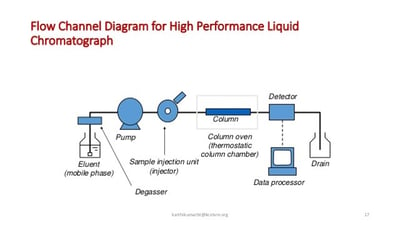
Stainless Steel & PEEK Issues
Common sample flowpath materials like stainless steel and PEEK can handle many LC applications but the most challenging applications can expose weaknesses in the flowpath.
|
Stainless Steel Issues
Acid Corrosion (Halogenated Solvents - HCl, HBr)
Ion Chromatography
Anionic Compounds (phosphates may chelate)
|
Peek Issues
Temperature limitations(Tg148°C)
Halogenated solvent damage
Tetrahydrofuran
|

The need for a durable metal free sample pathway.
An inert, corrosion resistant, metal free HPLC coating such as Dursan® solves sampling flowpath issues:
Dursan Solutions
- Anti-Corrosion, especially HCl and bleach attack.
- Resistant to saltwater corrosion
|
 |
Carryover, durability and corrosion impacts to the HPLC flowpath.
What is sample carryover?
Carryover is the result of a sample binding to the flowpath surface which then releases or elutes during a later sampling event. The result is that peaks from the previous analysis may appear is a later test results. The carryover contamination may corrupt later tests, causing false positive results.
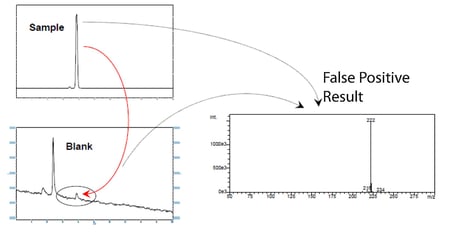
Dursan® is a metal free coating that prevents protein carryover and fouling which can lead to carryover. Because proteins don't stick to Dursan, rinse and sonication becomes much more effective.
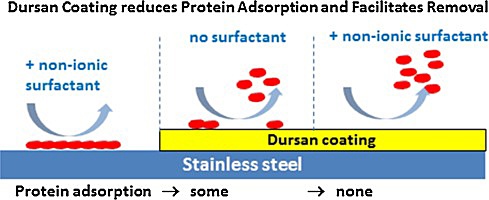
Effect of sonication on coating performance.
LC flowpath components are often sonicated to remove contaminants from the surface. Unfortunately protein resistant coatings like AF1600 can be damaged by sonication. Wear resistance test using sonication demonstrates the robustness of the CVD applied Dursan coating. In contrast AF1600 coating lost efficiency due to coating delamination
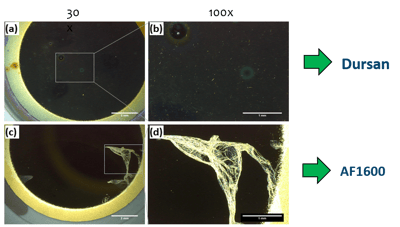
Optical micrograph of the post-sonication QCM-D sensors showed intact Dursan
coating (a and b), compared to delaminated AF1600 coating (c and d).
Corrosion and Ion Contamination
Chlorides (like HCl) and bleach can corrode stainless steel flowpaths, causing ion contamination and pitting of the LC flowpath. A metal free corrosion resistant coating like Dursan prevents contamination of the test sample. The test below shows the extent of contamination that can occur as a result of exposure to corrosive analytes. Test coupon immersion in hydrochloric acid solution demonstrates how badly contaminated a solution can become. After only a brief exposure to HCl, the uncoated stainless steel coupon solution is contaminated.
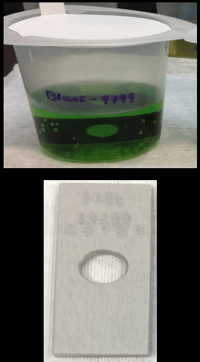
The Dursan® coated coupon solution shows no contamination, assuring a repeatable high quality test.
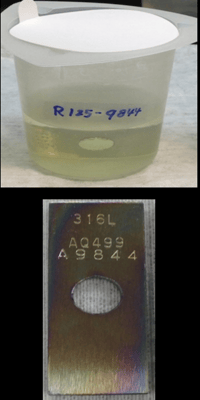
Want to learn more about LC and GC test inertness and durability? Read our LC-GC presentation.

*Image courtesy of Abbott Laboratories










